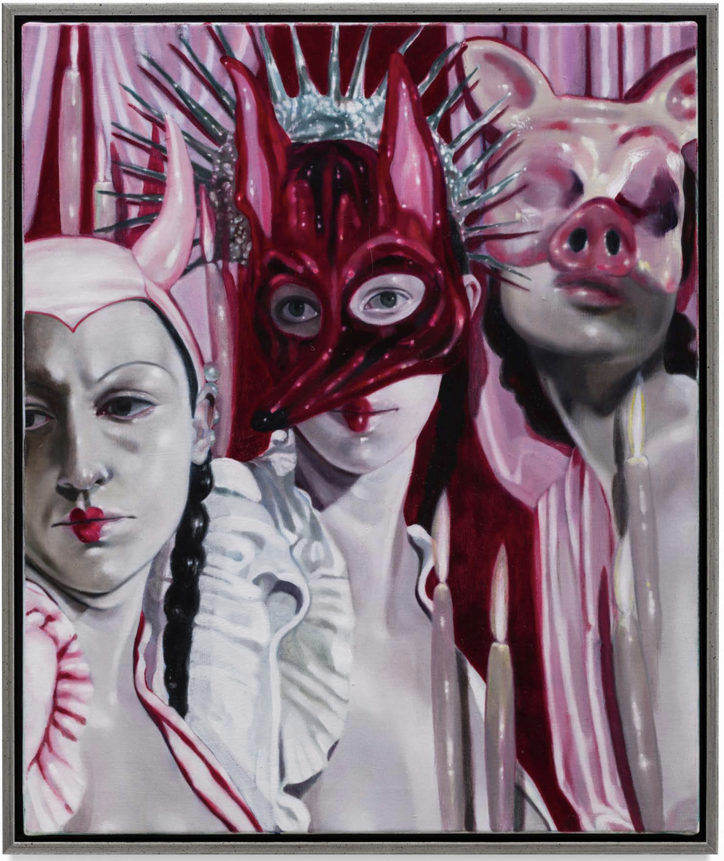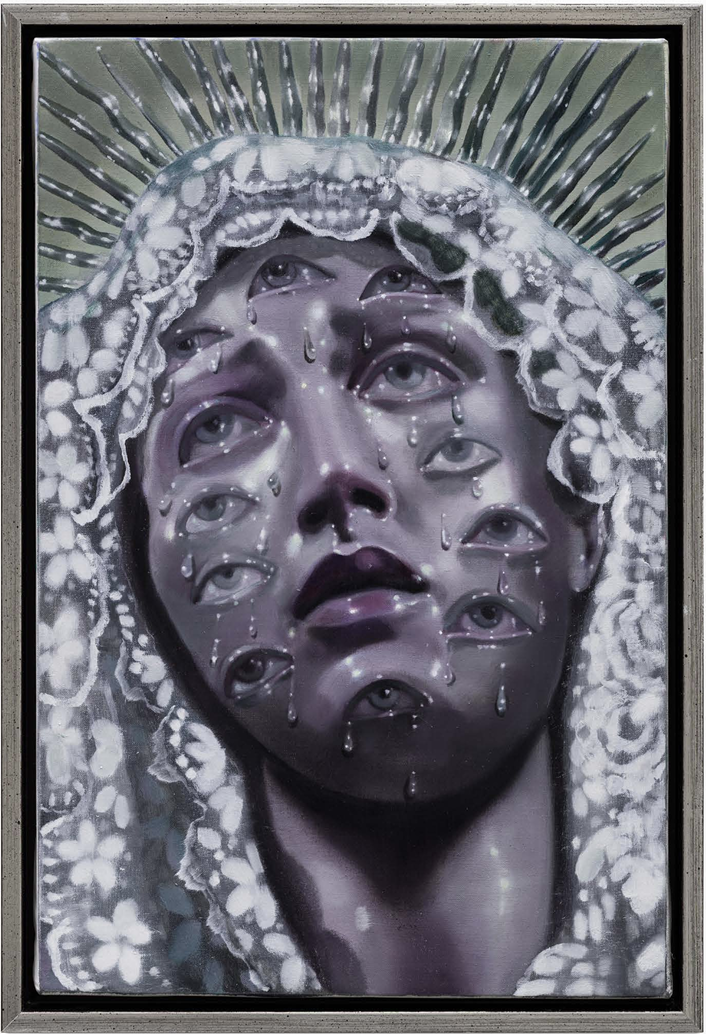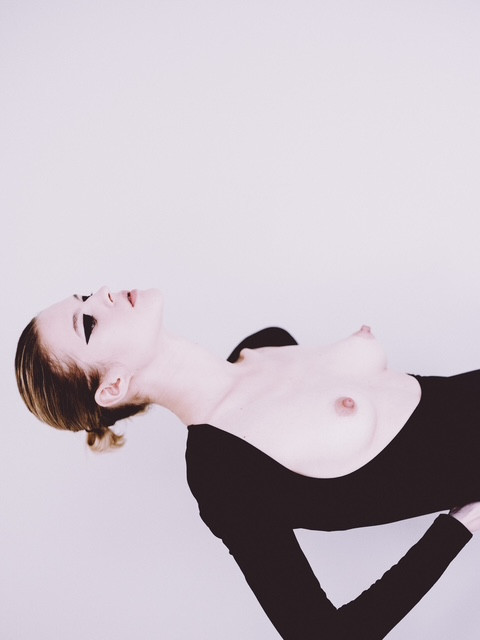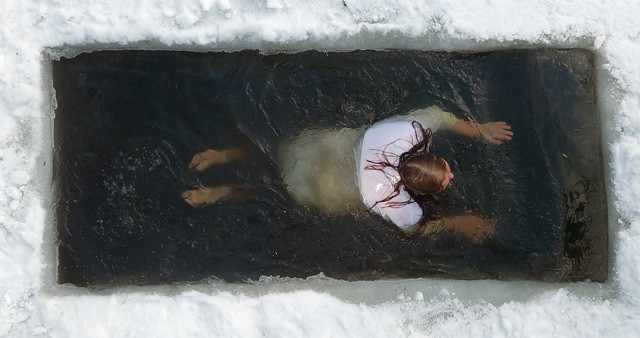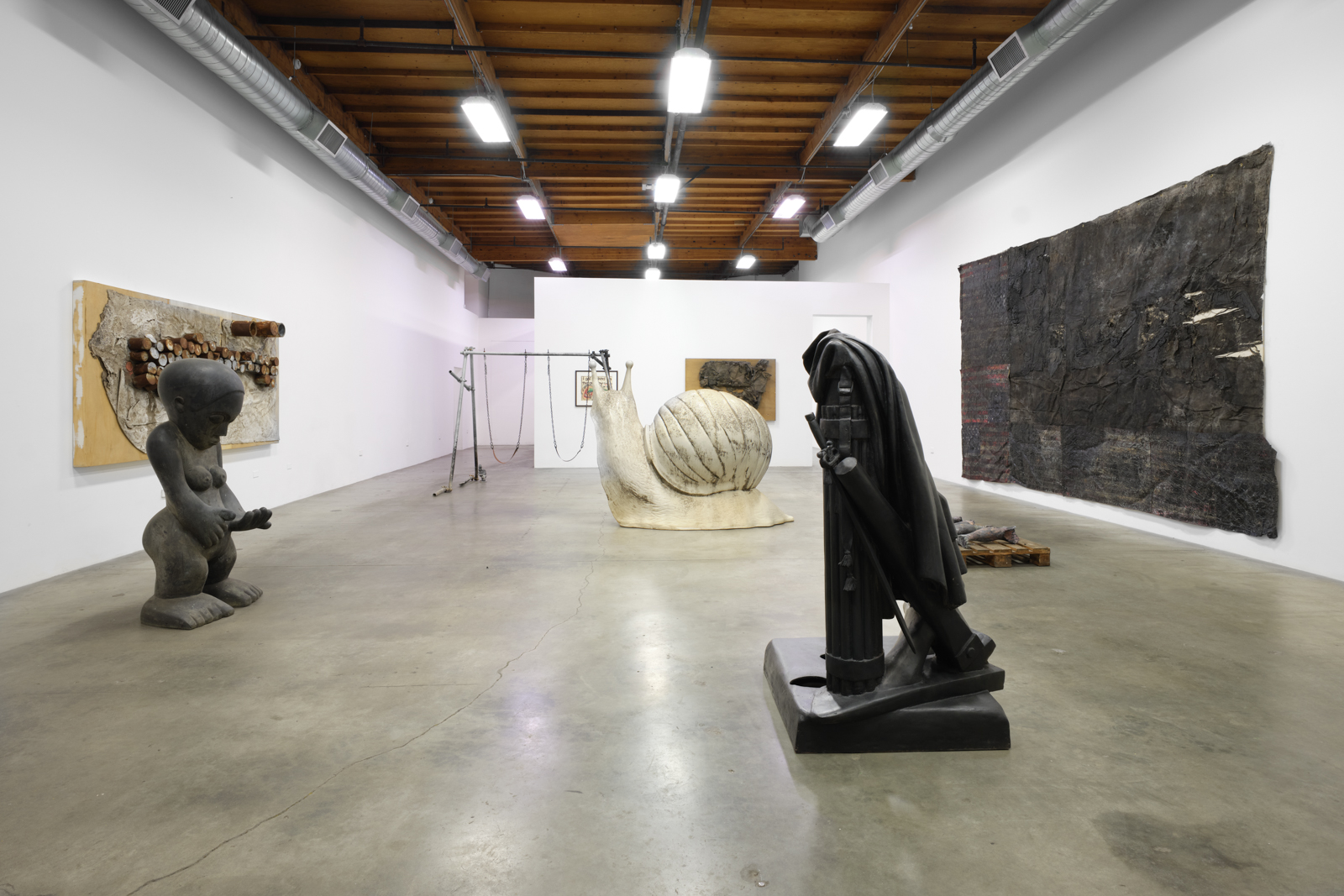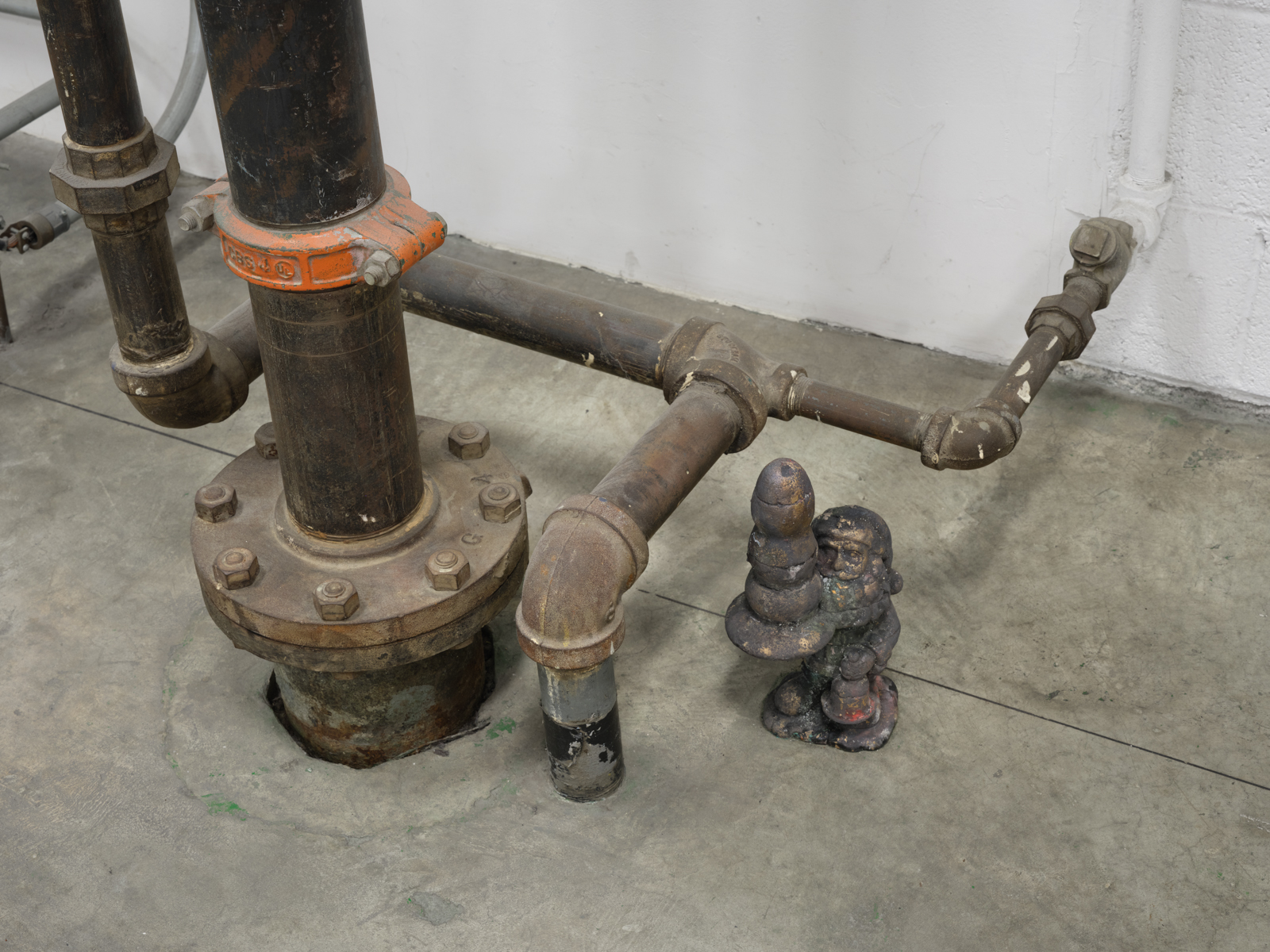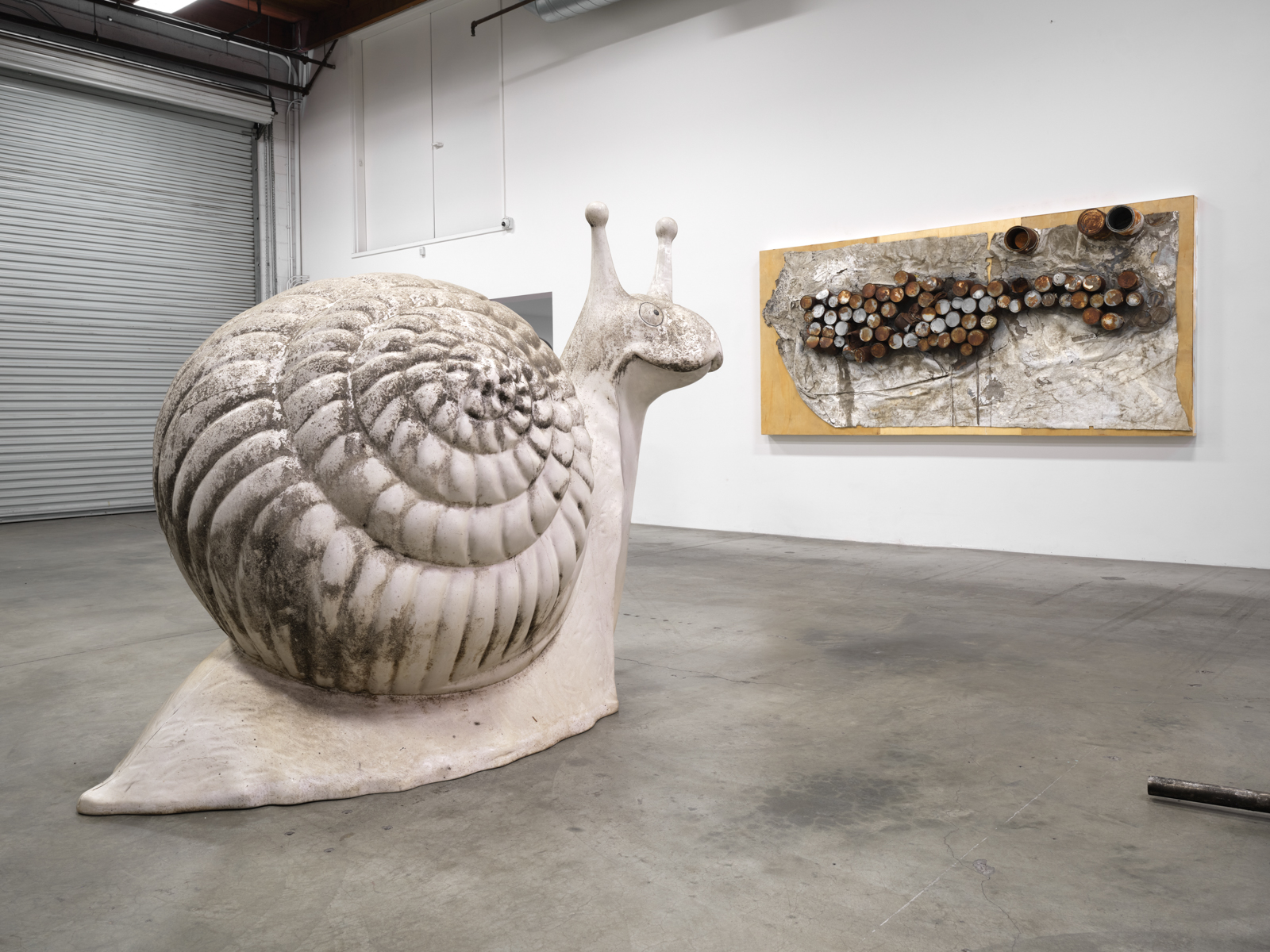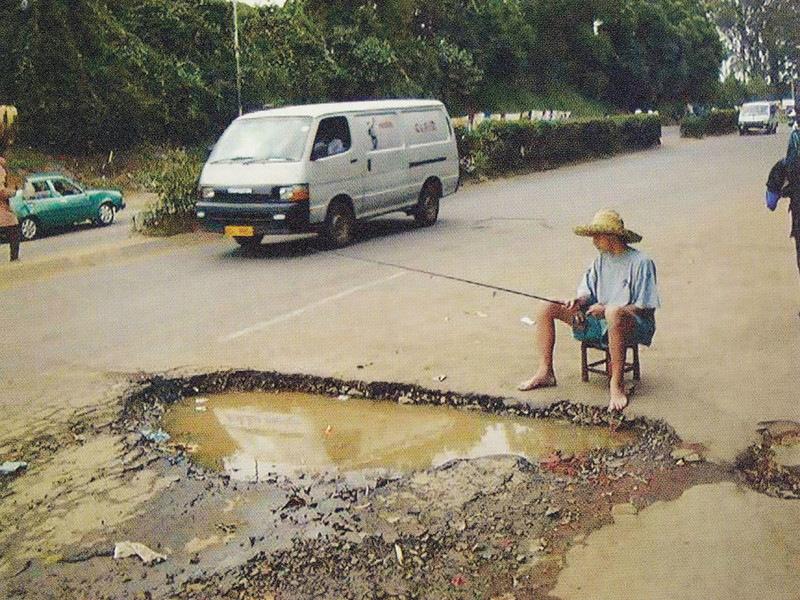Claire Christerson's Fantastical Realness

Your two new books are centered less around a linear narrative than a set of characters and symbols that are seen from various differing perspectives. Where do these motifs come from?
I had been planning a trip to Ireland and before I went I watched this movie called “The Secret of Roan Inish.” There’s this part in the movie where they describe the selkie creature as being trapped between Earth and Water. That idea – ”between earth and water” – really stayed with me. The idea of two things that sound so huge being finite at the same time was really appealing to think about as a kind of infinity loop in which both parties cancel each other out.
Once I was in Ireland, I was really impressed by the nature that I saw and began to draw from the feelings that came from things such as the weather, electric green grass and the ruins. For me this section of the book felt like a simple feeling of being grateful to be alive and to have my five senses to experience the world with.
Castle ruins are really interesting to me because they are each so unique, no stone is the same. The double helix has become very consistent in my work, and seeing moments of the persistence of life really fill me; moments such as seeing flowers and vines growing through fences. So it became exciting to see all this green overtaking the stones, and I began to imagine how the DNA could be applied to this feeling and the drawings just kind of happened.
What keeps you tied to drawing figuratively or orienting yourself through narrative when you so often veer away from it?
I enjoy drawing certain things over and over again, until I am naturally led to something new. It’s kind of like developing a muscle memory. I very much enjoy examining one idea from multiple angles and seeing how far something can get pushed. In terms of the narrative as a whole – I feel that I have always been more interested in the many stops along the way of a journey rather than an A to B way of thinking.
Also, working in a figurative fashion serves as a form of processing; it’s very cathartic. I am inspired by artists that have a very specific, obsessive persistence in their work. Someone like Keith Haring is very inspiring to me in how he really pushed his narrative through this one form of line but found so many different avenues to express on that journey. Another artist that I am inspired by is Aubrey Beardsley and the precision and craft that he inserted into everything he did. I feel a deep connection to that way of operating. I feel that drawing is the most honest medium that I can work in and it’s something that I truly enjoy. There are just certain things that I can only say with a line and it’s liberating to have a language to work within and to keep finding new sentences.

Much of your work in video and performance has been highly collaborative. Your two new books seem to me in a way the most personal of anything I’ve seen from you. What are the ups and downs of making work by yourself?
Well, while a lot of video/performance work has happened, my journaling process has remained consistent since I was 18. I am currently on journal number 25 and use these books as a way to remember and resolve. My drawings have been my most precious form of expression since I was 18 and I feel very good to be moving into this practice of focusing mostly just on that. It’s what feels the best for me and actually, the drawings really did begin with me doing them in the backs of classrooms. So with these two different books I wanted to give people a chance to see a more polished, finished kind of work, as well as a book that is more inspired by my journaling practice. I wanted these books to feel personal in two different ways; one being a loving, vulnerable growth, and the other showing a messier, sadder side of me. The past two years have been a very important journey for me in which I have learned that I really only can give my fullest attention to making the most vulnerable work possible.
Do you feel there is a responsibility for artists to be vulnerable?
I feel that historically the best art has come from a form of self-preservation – a need to decode and resolve one’s trauma – and I feel that a lot of this work has come from artists who are not white cis men. Not to say that that work wasn’t serving some spiritual purpose to those kinds of artists. It seems to me that putting certain work in a box as “self-care art” is misinformed because through-out time some of the greatest works made have been as a form of self-care and they are just seen as amazing works of art.
How long it took certain works to be regarded as high art is another question entirely. Someone that I think of in particular is Frida Khalo and the trauma that she endured in her life and the work that she produced; that was her process and her pain and the paintings she created were the outcome of that. Art is meant to be a form of therapy and healing and I don’t think that it necessarily needs a genre to be validated like that. Given our times, I think that it’s more important than ever to allow yourself to be expressive and share what you feel. I personally find myself being most drawn to work that is vulnerable because when you share your own power and truth, I think that makes other people feel like they can open up too. I know that in my own life, since the passing of my best friend, I only have the capacity to make work that is self-reflective and sticky and hard and vulnerable because that’s all I know now. With all the pain, loss and hardness these times come with, it can also can bring out internal strengths and beauty that we maybe didn’t know we had.
The characters in Fractures in My Structures sometimes feel autobiographical; sometimes they take on the decorative quality of an illuminated letter or the talismanic sensibility of a tarot card. Who are they to you?
Well in the past year, I have been definitely inspired by illuminated manuscripts. I like to think about them as comic books. I love how much information is being given to you in this highly flat 2-d World. That’s something that I feel has remained consistent throughout my work is information overload. I love that. I love having to examine something over and over again to find a new idea or detail that you didn’t see before. These figures are sometimes me, they are sometimes my best friend, they are sometimes no one in particular.
What is next for you?
Drinking water, eating healthy, telling my loved ones that I love them. I am also currently working on a solo exhibition that I will be having at Little Sister Gallery in Toronto in September.



